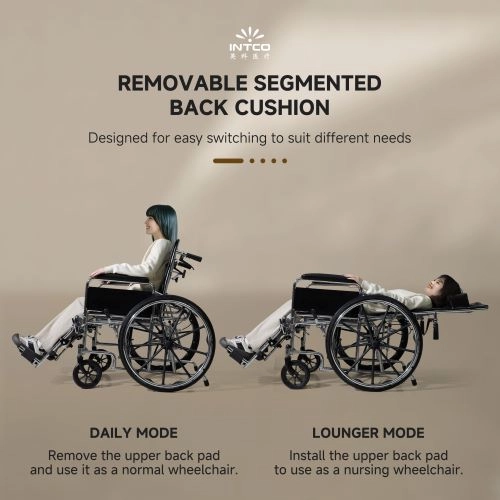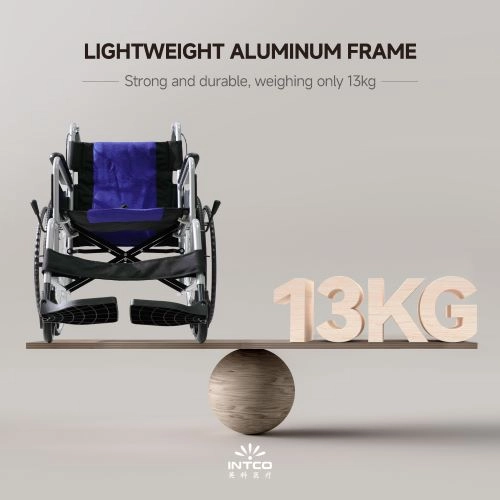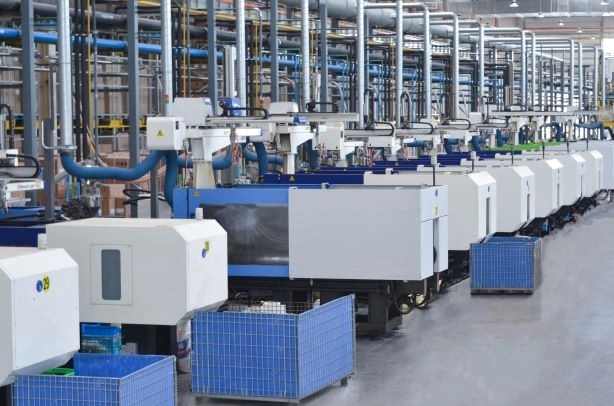Contact Us
Exploring the Benefits of an Adjustable Manual Wheelchair Design
Introduction to Adjustable Manual Wheelchairs
What is an Adjustable Manual Wheelchair?
Adjustable manual wheelchairs are mobility aids designed to meet users’ needs with customizable features. Like seat height and armrest positioning to fit the requirements of users. This flexibility makes them versatile and suitable for different people.
Why Adjustability Matters
The importance of adjustable manual wheelchairs lies in improving occupant well-being and body alignment while effectively meeting specialized health needs. Adjustable manual wheelchairs with adjustment capabilities deliver personalized configurations. These adaptations cater to users’ distinct physical demands and lifestyle choices.
Tailored engineering seeks to decrease physical strain. This approach prevents health risks associated with extended wheelchair dependency. The modification options additionally allow ongoing adaptability. This flexibility accommodates users experiencing gradual physiological changes over extended periods.
Key Benefits of Adjustable Manual Wheelchair Designs
Enhanced Comfort and Posture Support
Customizable Seat Dimensions
Among the basic advantages of adjustable manual wheelchairs is that there can be personalized control over seat dimensions to fit everyone. The versatility of adjustable height, width, and depth to suit occupants into sitting posture offers a simple luxury. Adjusting the seat with a controlled motion prevents excessive pressure points, as well as lowers the risks for discomfort following a long sitting spell.
Adjustable Backrest and Armrests
The lumbar support and arm positioning components boost seated comfort through customized ergonomic support. These elements adapt to unique anatomical needs. For instance, the rear support panel offers tilt angle modifications. Users can set reclining or upright positions to maintain proper spinal curvature.
Similarly, the arm platforms feature height customization. This adjustability enables optimal elbow placement, effectively alleviating neck and shoulder pressure. By positioning upper limbs at natural angles, muscular tension is minimized through biomechanically sound configurations.
Improved Health and Safety
Pressure Ulcer Prevention
Prolonged unsupported sitting poses elevated risks of tissue breakdown—a prevalent challenge for full-time wheelchair users. Manual mobility chairs combat this issue through ergonomic weight distribution systems. These engineering solutions ensure balanced force dispersion across contact surfaces.
Specialized seat configurations with gravity-shifting capabilities offer targeted relief. Users can activate these mechanisms to periodically modify pressure points. This dynamic adjustment significantly reduces strain on vulnerable anatomical regions. The strategic repositioning process maintains circulatory function while preventing localized tissue damage.
Reduced Risk of Musculoskeletal Strain
Extended periods of static posture can trigger musculoskeletal fatigue over time. User-configurable mobility systems counteract this risk through dynamic positioning controls. These mechanisms enable customized seating arrangements in biomechanically optimized orientations.
Proper spinal positioning during seated periods achieves optimal alignment. This postural optimization significantly reduces biomechanical stress concentrations. The resultant load distribution patterns foster enhanced physical wellness.
Versatility for Diverse Users
Adaptability to Changing Needs
Adjustable manual wheelchairs are manufactured considering flexibility so they can be modified to suit individuals whose conditions or requirements shift over time. For instance, while a person’s mobility or vigor alters because they are growing old or after treatments by a medical practitioner the chair is being tailored accordingly.
Compatibility with Accessories
These mobility systems support modular augmentation for optimizing functional efficiency and ergonomic support. Add-on components address diverse functional requirements across user demographics. Implementation ranges from cervical support modules to adjustable pedal systems.
Supplementary units include integrated storage solutions and beverage retention units. Customizable interface components adapt to daily activity patterns and individual usage habits. Each modular enhancement aligns with task-specific ergonomics and personalized spatial configurations.
Practical Applications of Adjustable Manual Wheelchairs
Manual Wheelchairs can used according to different people. Those wheelchairs can be customized according to your need. INTCO Medical has products: YK9101 which is designed for daily mobility and independence.
Daily Mobility and Independence
Individuals with neuromuscular impairments such as paraplegia or myopathies benefit significantly from adaptable seating systems. These adjustable manual wheelchairs enable precise parameter customization aligned with specific clinical demands.
Therapy adjustments are tailored to each person’s specific condition. This helps avoid extra problems caused by poor posture. The design of the support (like braces or seats) fits the body correctly while still allowing comfortable movement.
Support for Specific Medical Conditions
Patients with muscle or nerve conditions (like paralysis or muscle diseases) need wheelchairs that can be adjusted for their needs. These medical-grade manual wheelchairs allow fine-tuning to match each person’s specific physical challenges.
By customizing the wheelchair’s fit, users get proper body support tailored to their condition. This helps prevent additional problems caused by poor posture. The design also protects nerves and blood flow by evenly distributing body weight, improving comfort and long-term health while keeping muscles and joints in better balance.
Key Features to Prioritize
Adjustability Range
Selecting configurable mobility systems requires critical priority when determining optimal solutions for users with specific biomechanical requirements. The process involves multidimensional fitting protocols to achieve anatomical compatibility.
Adjustable components include seat elevation controls and dorsal support reconfiguration. These elements enable tailored ergonomic solutions for diverse users. Such adaptability extends beyond surface-level comfort enhancement.
The dynamic modification capacity ensures progressive adaptation trajectories. This scalability accommodates evolving rehabilitation demands across temporal dimensions. As a durable rehabilitation asset, the system supports longitudinal therapeutic objectives while optimizing cost-efficiency ratios.
Weight Capacity and Durability
When evaluating manual mobility systems, load-bearing specifications and material resilience constitute critical selection parameters. Users must verify structural compatibility between occupant mass and device tolerance thresholds.
Manufacturers typically utilize high-grade steel or aluminum alloys. These materials achieve optimal mass-to-durability ratios while maintaining manageable system weights.
The reinforced chassis design facilitates prolonged operational durability. Simultaneously, reduced mass parameters enhance maneuverability for both operators and assistive personnel.
Superior mechanical endurance directly correlates with reduced component degradation rates. This engineering characteristic proves economically advantageous through minimized lifecycle maintenance expenditures.
Budget and Insurance Considerations
When purchasing adjustable manual wheelchairs, one should acquire one that can be tailored to meet individual needs and preferences for the majority of people. Ensuring that the wheelchair is within their budget constraints is also crucial. Although such adjustable manual wheelchairs are more costly in the initial acquisition due to their advanced features, they are worth the worth through tailoring. Their longevity contributes to their overall worth as well. People should consider their individual circumstances and look for options that provide an optimal balance between affordability and usability.
Insurance coverage is a key consideration in procuring adjustable manual wheelchairs. Most insurance policies will cover partial or full costs if medically necessary. Contacting medical practitioners and insurers will ascertain what is covered. This helps reduce financial burdens while ensuring access to high-quality mobility solutions.
INTCO Medical: Top Supplier in Adjustable Manual Wheelchair
Advanced Design Features for Superior Comfort
INTCO Medical is known for being a provider of adjustable manual wheelchairs that focus strongly on user comfort and usability as key factors. There’s attention to detail in their wheelchair designs to improve overall user satisfaction. For example, INTCO Medical utilizes ergonomic seating systems to ensure posture and prevent discomfort from long-term usage.
As one of the famous brands in the production and manufacture of medical wheelchairs and mobility scooters, INTCO Medical is a high-tech manufacturing company committing to R&D, production and marketing of medical consumables and durable medical equipment with main business covering medical consumables, rehabilitation equipment, physiotherapy care, etc.
Up to now, with a good product reputation, INTCO Medical has been exported products to more than 120 countries and regions in America, Europe, Asia, Africa and Oceania, which is providing practical products and high-quality services to over 10,000 clients.
Jiangsu Intco Medical Products Co., Ltd, a branch of Intco Medical, focuses on the research, production, and marketing of rehabilitation equipment and therapy products. We specialize in manual and electric wheelchairs, mobility scooters, transfer machines, walking aids, commode chairs, and canes. With hundreds of automated machines, we can produce 1,000,000 manual wheelchairs and 100,000 electric wheelchairs annually, serving over 66 countries and regions worldwide.
INTCO Medical has gained a reputation in the mobility solutions industry by providing a variety of adjustable manual wheelchairs to meet different needs effectively tailored to each individual’s preferences and requirements. Their commitment to creativity. Ensuring user contentment positions them as a top choice for those in search of dependable and comfortable mobility assistance options.
FAQ
Q: What is the growth rate of global adjustable manual wheelchair market demand in 2025?
A: In 2025, the global medical equipment market continues to grow, adjustable manual wheelchairs due to aging and chronic disease demand, is expected to grow at an annual rate of 5%-7%, China is the main exporter, accounting for more than 40% of the global supply chain.
Q: What are the technological innovation trends of adjustable wheelchairs?
A: AI and Internet of Things technology accelerated penetration, some high-end wheelchairs integrated sensors and intelligent adjustment functions, 2025 AI-assisted wheelchair market share will increase to 15%, mainly used in health monitoring and personalized adaptation.






